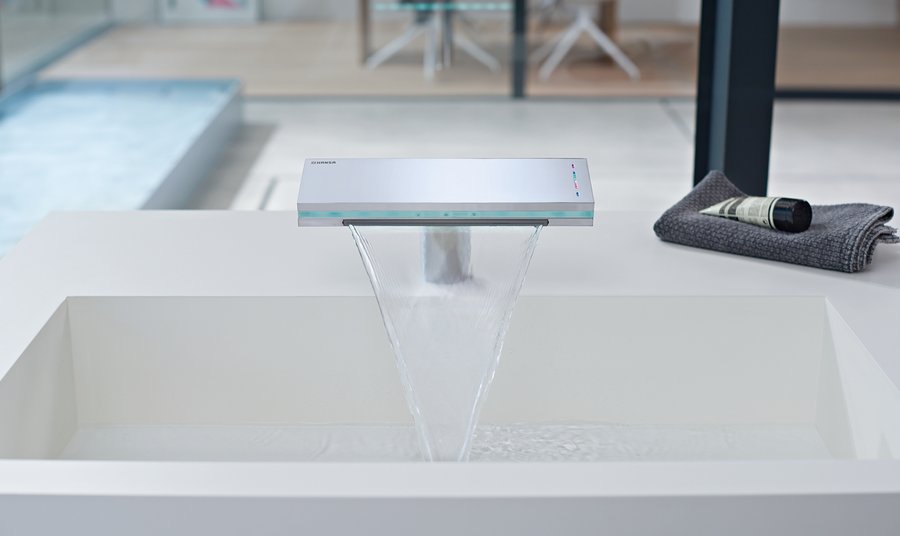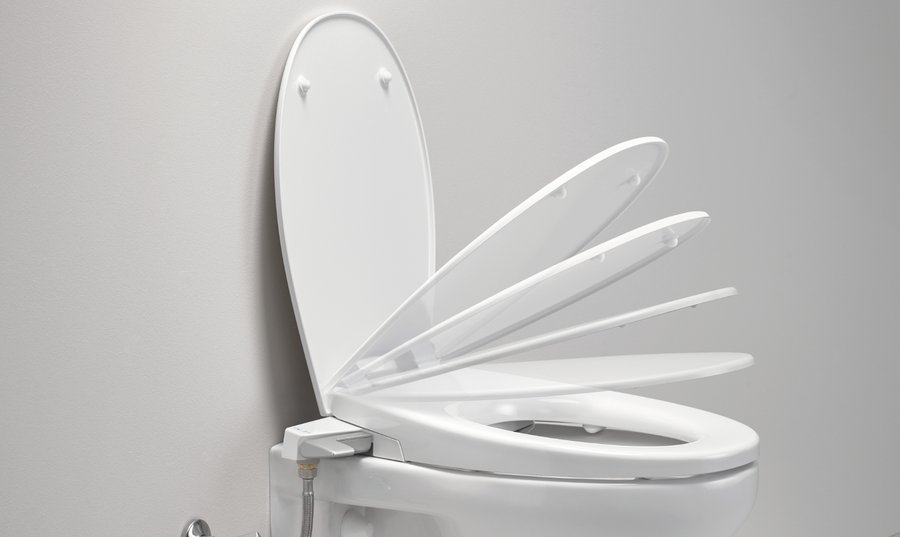The touchless bathroom

Touchless
technology is helping to meet the increased hygiene
requirements of the current times.
With the introduction of new
hygiene measures around the world, intelligent concepts can play a key role in
public and semi-public spaces. Product solutions for this increased sensitivity
to hygiene are available for the private bathroom too.
Washbasins and toilets in
office complexes, restaurants, hotels, event venues, schools or universities,
but especially in hospitals and care homes, need to be re-evaluated: touchless
technology has matured and is helping to meet the increased hygiene
requirements of the current times. The new demands being made of hygiene
measures seem to be prompting a change of thinking in private households too:
due to the latest developments, people have become far more sensitised to the
importance of cleanliness and safeness. Touchless
products will play a key role in this context because
consumers will want to minimise contact with surfaces as much as possible.
More hygiene at the wash basin

Many manufacturers also offer their conventional tap series with sensor control.
Photo: HANSA
The public toilet or private
bathroom is taking on a vital role when it comes to complying with hygiene
measures, because touching a conventional tap – especially in public bathrooms
– should be avoided whenever possible. When the user first touches a
conventional fitting, their hands are unwashed and can therefore transfer germs
and viruses to its surface. At the same time, cross-contamination means there
is a risk of picking up new germs and viruses after washing. Touchless taps
could therefore be a good alternative for making the vehemently propagated
precaution of hand-washing more hygienic. What’s more,
the fittings hardly look any different from conventional taps nowadays: thanks
to the ongoing miniaturisation of sensor technology, the design of the taps can
be adapted to the architectural setting.
Dornbracht goes one step
further with its Touchfree variant, which is compatible with all the manufacturer’s
fittings series. Because it’s based on high-frequency technology, the
system can dispense with an infrared eye. The HF sensor
is positioned under the washbasin and is therefore invisible to the user. Functions
like the temperature setting, shut-off time or cleaning stop are adjusted via a
separate system box connected to a power supply. The range of
the sensor can be adjusted to the operator’s requirements or the characteristics
of the room. Thanks
to the automatic on/off function, a substantial amount of water can be saved
when users spend longer soaping and washing their hands – a not inconsiderable
energy-saving benefit, especially when warm water is used.

The retrofitting with a battery-powered sensor mixer
installation doesn’t require an electrician and there’s no need to lift the
tiles in order to lay cables.
Photo: KLUDI
In addition, the cycle time,
the sensitivity of the sensor and the automatic hygiene rinse can be set using
an app on a smartphone or tablet. The cleaning times, rinse intervals and rinse
duration are adjusted individually. Both mains- and battery-operated
fittings are available; the low-energy electronics ensure a long lifespan
without having to change the battery. When retrofitting a sensor mixer,
it’s often advisable to opt for the battery-powered version because
installation doesn’t require an electrician and there’s no need to lift the
tiles in order to lay cables.
Cleaner than clean
Another benefit of touchless
taps becomes apparent when it comes to the cleaning of washbasins and fittings:
because the user doesn’t have to touch any control elements, their hands
generally stay below the spout during washing, which prevents water dripping
off of their hands and onto the mixer. This results in fewer water marks and
limescale deposits on the surface of the fitting, which makes cleaning easier. In
addition, several models from Kludi allow the sensor to be deactivated while
the basin is being cleaned.
Speaking of cleaning: nowadays
you can even use soap without touching anything too – thanks to touchless soap
dispensers like the one from Keuco’s Plan series. In addition
to its function as a washbasin dispenser for foam soap or foam disinfectant, it
can also be used to dispense hygiene foam for toilets. Hygiene foam
is a simple way to transform ordinary toilet paper into a wet wipe that can be
flushed down the toilet without causing blockages – a particularly
interesting aspect for toilets in public places where the use of shower toilets
is out of the question.
Touchless toilets

With the Visign for Style 25 sensitive flush
plate from Viega, the flush can be activated without any contact at all.
Photo: Viega
When it comes to minimising hand
contact with surfaces, the digitisation of the toilet offers major advantages. The sensor
technology behind the Visign for Style 25 sensitive, for instance, a flush
plate from Viega, allows the flush to be activated without any contact at all. Instead, the
user simply swipes their hand over the required function (accentuated by a grid
of illuminated points). The larger zone represents the full flush option,
the smaller area symbolises the water-saving alternative. In addition,
the flush plate is finished with afterglow paint that recharges when exposed to
both natural and artificial light. It can therefore serve as an
orientation point in the dark so that the light doesn’t necessarily have to be
switched on.
A toilet that thinks for itself
Villeroy & Boch even
offers a toilet that can think for itself and activates the flush autonomously
if the user forgets or isn’t able to do so. There is also
a timer setting for this function to prevent germs building up in stagnant
water when the building is vacant or its occupants are travelling.
In
addition, the automatic flush adjustment feature ensures efficient use of water
by identifying whether the user is standing or sitting. If it recognises a
standing user, a smaller amount of water is used to flush the toilet as soon as
he walks away; if the user is sitting down, the flush volume is
regulated depending on the duration of use. Alternatively, the flush plate can also be
operated manually – for instance if there’s a power failure.

Thanks to sensor technology, the lid
automatically opens when the user approaches and closes again afterwards.
Photo: Grohe
Modern toilets offer more than
just touchless flushing. Many toilets are available with optional features
that mean the user doesn’t even have to touch the lid – such as Grohe’s Sensia
Arena shower toilet model. Thanks to sensor technology, the lid
automatically opens when the user approaches and closes again afterwards.
At least in terms of hand contact
with surfaces, this permits the implementation of a virtually touchless hygiene
concept – not just in public toilet facilities but in private bathrooms too. The
only challenge remaining for product developers now is an automatic opening and
locking system for the door.




